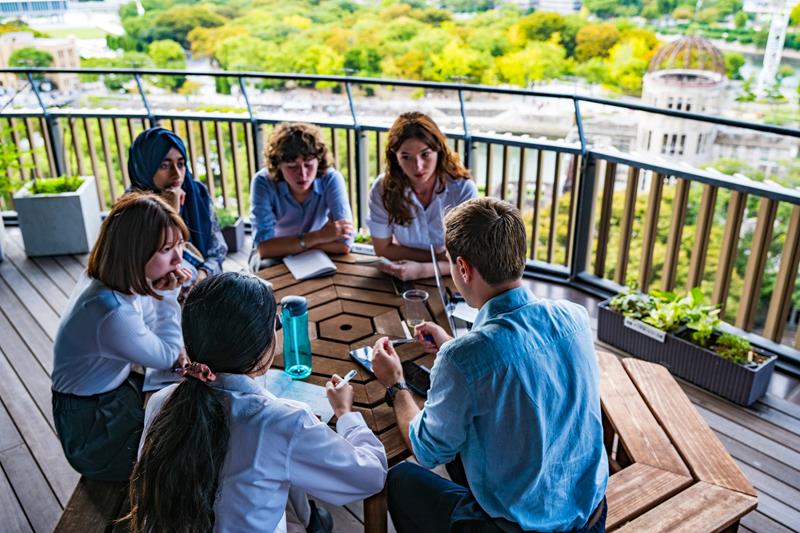
News
The Hiroshima-ICAN Academy 2025: Building peace in times of change
The International Campaign to Abolish Nuclear Weapons (ICAN) and Hiroshima Prefecture co-hosted the seventh Hiroshima-ICAN Academy on Nuclear Weapons between July 15 and October 18, 2025. As an International Steering Group member of ICAN, Peace Boat plays a central role in the planning and organization of the Academy.
Today, armed conflict rages in many places around the world — displacing, wounding, and killing the civilians who find themselves in harm’s way as international law, including international humanitarian law, is disregarded. International organizations are struggling to fulfill their roles and arms control and disarmament agreements are eroding. Relations between nations are shifting dramatically and tensions continue to rise, punctuated by threats to use nuclear weapons.
The Hiroshima-ICAN Academy 2025 considered the perspectives and actions needed to build international peace and security in today’s world. While learning from the experience of Hiroshima — devastated by the first nuclear strike in war 80 years ago — Academy participants studied the humanitarian impacts of nuclear weapons and discussed paths toward sustainable peace.
The Academy consisted of two parts: an online learning session with five webinars and an in-person Hiroshima Session. The webinars were open to anyone interested and attracted wide participation, with roughly 300 people learning together. The Hiroshima Session brought together 20 participants from 17 countries.
300 participants learned together through webinars
The first webinar, held on July 15, welcomed Hiroshima Hibakusha Futagawa Kazuhiko and downwinder and writer Mary Dickson from the United States. Mr Futagawa, who was still in his mother’s womb at the time of the atomic bombing, spoke about the deaths of his father and older sister; he also shared his mother’s untiring efforts to protect and raise her children over the following years, as well as her life-long, profound grief. In the Q&A, participants asked Mr Futagawa to speak more about the discrimination Hibakusha faced and how he finds inner peace. In the second half of the webinar, Mary shared her experience as a downwinder affected by radiation from nuclear detonations in the US — so-called nuclear “testing” — as well as her advocacy work. Among their many questions, participants were curious to hear more about advocacy best practices in the face of differing opinions and political polarization, and how Mary has connected with other nuclear survivors around the world.
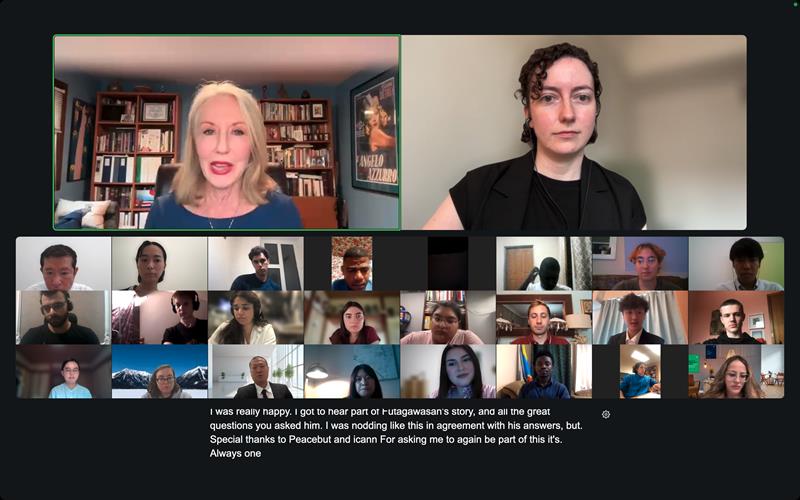
The second Webinar was held on July 18 on the social, environmental, and economic impacts of nuclear weapons. We were joined by guest speaker Robert Jacobs, historian and emeritus professor of Hiroshima City University, who spoke about radioactive waves and particles and the legacies of nuclear testing, as well as those impacted by them — the Global Hibakusha. Participants were curious to hear more, and their questions covered topics such as compensation and remediation for affected communities, challenges associated with nuclear power, and how survivors’ voices can be better incorporated into policy frameworks.

The third Webinar was held on July 22 on the topic of nuclear deterrence, joined by Laura Considine, associate professor in International Politics at the University of Leeds. She explained the key concepts of nuclear deterrence and some of the security dilemmas and challenges it produces. Participants were eager to hear more about a range of related topics, including feminist perspectives on deterrence, and how non-nuclear nations can play a role in promoting alternative security frameworks.
The fourth Webinar was held on July 24, on the theme of building peace in times of change. We were joined by two guest speakers — Olamide Samuel, network and engagement specialist at the Open Nuclear Network, and Daryl Kimball, executive director of Arms Control Association — both of whom spoke about ongoing nuclear disarmament efforts from their respective expertise. They explained various barriers to nuclear disarmament, and emphasized that diverse individuals and sectors of civil society can and should work in concert to further peacebuilding efforts, even amid the emerging new nuclear arms race.
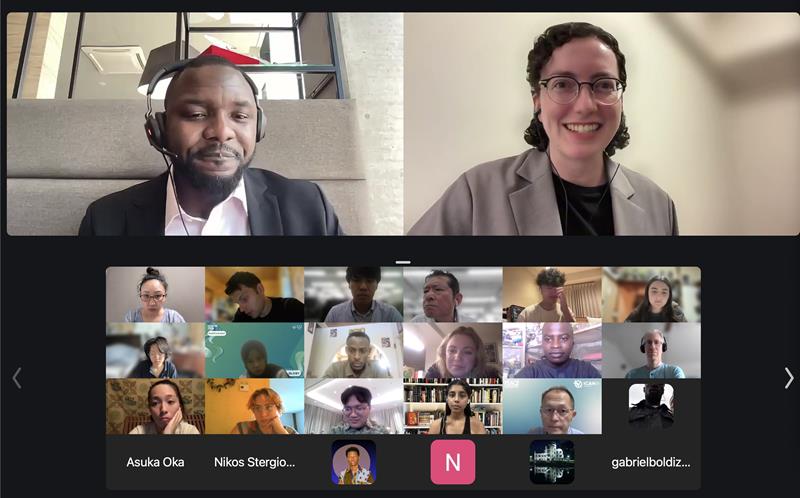
The fifth and final webinar took place on July 30, examining the roles of the UN and civil society for nuclear disarmament. Our two guest speakers were Melissa Parke, Executive Director of ICAN, and Christopher King, Chief of the UN Office for Disarmament Affairs’ Weapons of Mass Destruction Branch. Melissa outlined ICAN’s activities to promote nuclear abolition, which center on raising awareness of the humanitarian impacts of nuclear weapons and promoting the universalization of the Treaty on the Prohibition of Nuclear Weapons (TPNW). Christopher spoke about the UN’s history of working for disarmament and the major disarmament frameworks therein. Throughout the webinar, participants were eager to ask questions, especially on what youth can do to promote nuclear disarmament; both speakers offered words of encouragement and empowerment.
Knowing various consequences and deepening understanding through community
The programme this year selected 20 participants for the 5-day in-person Hiroshima Session, including four from nuclear weapon states (the United States, the United Kingdom, France and China) and 13 from other countries (Austria, Australia, Brazil, Canada, India, Japan, Kazakhstan, Kenya, Mexico, Nigeria, Pakistan, Poland and Türkiye). Participants joined a guided tour of the Peace Memorial Park, and visited the Peace Memorial Museum and the Radiation Effects Research Foundation. They also met with the Governor of Hiroshima Prefecture and the Vice Mayor of the City of Hiroshima. These visits helped participants learn the meaning of Hiroshima’s experiences, reflect on the prewar vibrant city, and deepen their learning and conversations about nuclear abolition and peacebuilding.
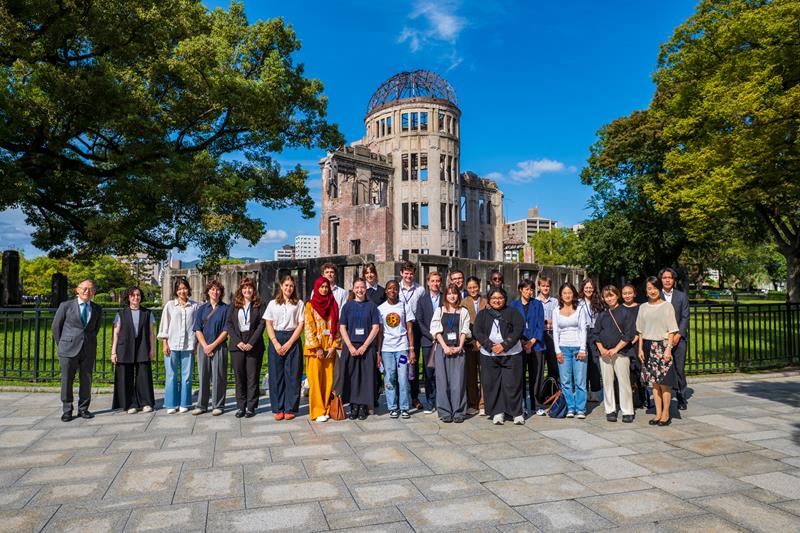
Participants engaged in small-group discussion with three Hibakusha (Kajimoto Yoshiko, Kondo Koko and Kasaoka Sadae) and an A-bomb legacy successor (Mozume Megumi), learning more about individuals’ experiences of the nuclear bombing.

Non-Japanese victims of the atomic bombing of Hiroshima, including those from the Korean Peninsula, China, Russia, Southeast Asia, and the US were also highlighted. Many were shocked to know the experiences of Hibakusha with microcephaly, who lived with disabilities caused by exposure to radiation while in their mother’s womb. This was followed by an introduction to Nagasaki’s experience of the atomic bombing and group discussions.
The group paid a visit to Hiroshima Prefecture Governor Yuzaki Hidehiko, who introduced the Prefecture’s activities for peace and nuclear disarmament as well as answered participants’ questions. They also heard about Hiroshima City’s initiatives for nuclear abolition and peace from Deputy Mayor Nakai Mikiharu.
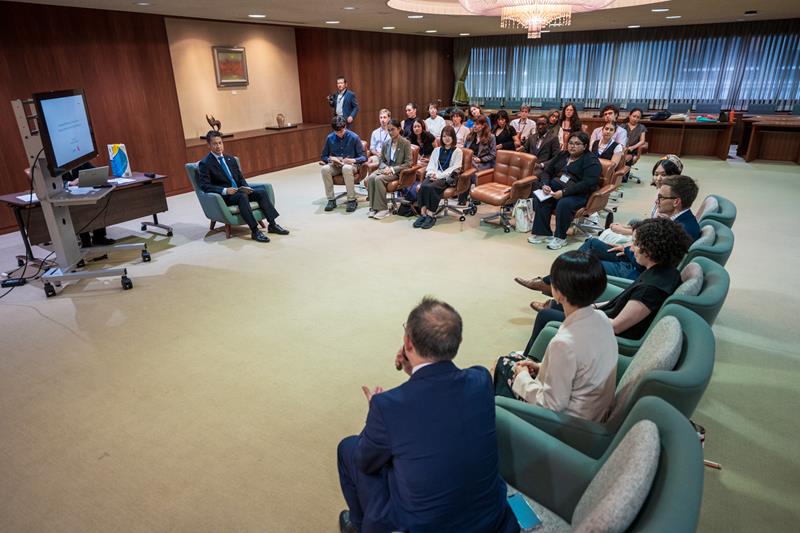
ICAN Advocacy Officer Florian Eblenkamp, who joined the session in full, introduced his work rallying support for the Treaty on the Prohibition of Nuclear Weapons and led an advocacy workshop with participants. At the Radiation Effects Research Foundation (RERF), they learned about the organization’s history and the major findings from its long-term studies of Hibakusha.

The Hiroshima Session of the Hiroshima-ICAN Academy 2025 concluded with a public event in which participants presented their take-aways from the programme overall, as well as actions for nuclear abolition they plan to take going forward. Many highlighted the intersectional nature of nuclear harm and recalled the stories that had touched them during the programme. They highlighted the new mindsets they will take into their future work, and new initiatives they hope to pursue. In a final reflection following the public session, a number of participants spoke about the strong feeling of community they experienced during the Hiroshima Session — a community we are sure will continue even after the Academy concludes.
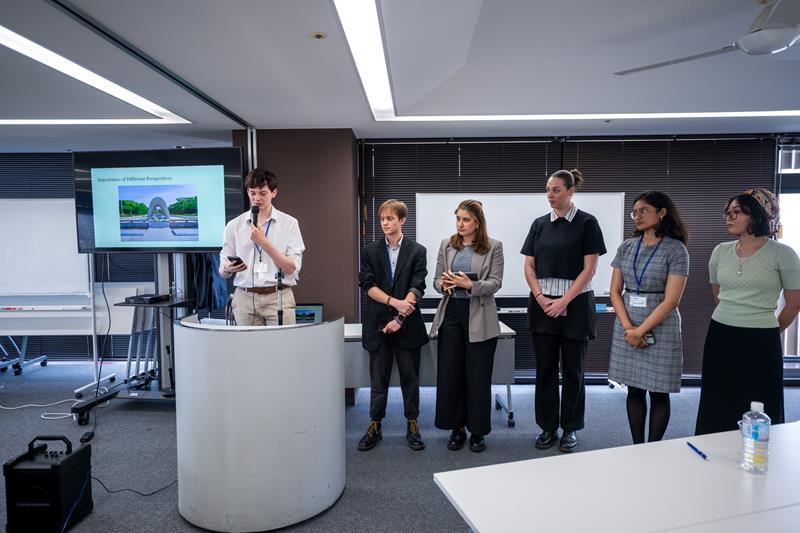
With the diverse perspectives they gained throughout the Academy, participants will keep working for a world without nuclear weapons.The Hiroshima-ICAN Academy will aim to continue nurturing the next generation of peacebuilders and to sustain these steps forward.
Organisers would like to express our special thanks to the three coordinators - Annelise Giseburt, Fukuoka Nao and Tashiro Mirei - for their preparation, facilitation and hospitality in Hiroshima. Peace Boat staff members Kawasaki Akira and Watanabe Rika developed and organised the programme in cooperation with the Hiroshima Prefecture and the ICAN staff team in Geneva.
Related pages (click to access):
Hiroshima-ICAN Academy 2025 (ICAN Website)
Hiroshima-ICAN Academy 2025 (Hiroshima Prefecture Website)

